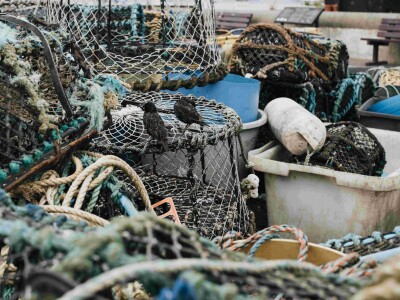One of the largest toxic algae blooms seen off California has shut down recreational and commercial fishing along the West Coast and could be contributing to a host of sea lion strandings in the Bay Area, scientists said this week.
The algae, pseudo-nitzschia, is a food source for small fish such as anchovies and sardines as well shellfish but it releases a neurotoxin called domoic acid that has been known to kill marine life and is harmful to humans in high enough doses.
Marine life experts are investigating if the blooms have contributed to an above-average number of sea lion strandings in Northern California. Thousands of malnourished pups have come ashore since the beginning of the year and experts have struggled to find out why.
So far scientists have determined that a likely culprit is the unusually warm waters in the Pacific this year, which has limited the sea lions’ food supply since January, according to the Marine Mammal Center.
Read the full story at the Los Angeles Times>>
Read more about West Coast fisheries >>





